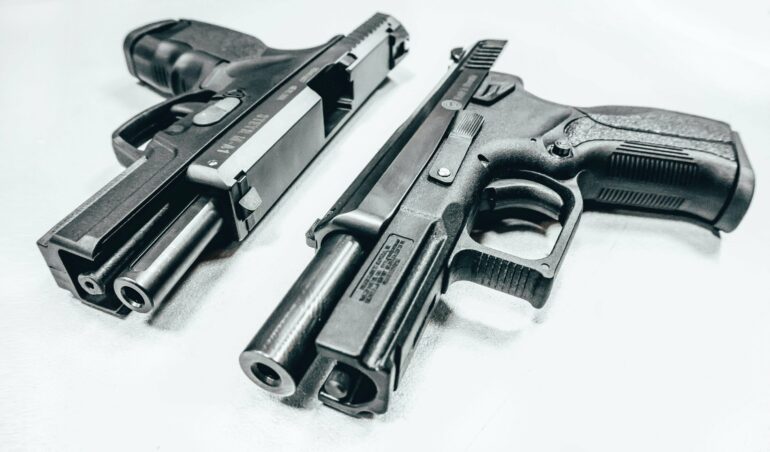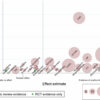The crack of a gunshot ringing out in the night is all too familiar to many Americans. A new study captures just how common—and potentially disruptive—nighttime gunshots can be in American cities.
In a cross-institutional collaboration from Brigham and Women’s Hospital and Massachusetts General Hospital researchers examined the number of nights and people potentially affected by the sound of nighttime versus daytime gunshots and the relationship between the sound of nighttime gunshots and median household income in the United States.
The team found gunshots are twice as likely to occur at night, and that low-income communities are disproportionately affected by them. Their results are published in the Journal of General Internal Medicine.
“A nighttime gunshot likely disrupts the sleep of nearby community residents due to the sheer sound of the shot, which is then followed by a cacophony of sirens from police vehicles and ambulances,” said corresponding author Rebecca Robbins, MMSc, Ph.D., MS, of the Division of Sleep and Circadian Disorders at Brigham and Women’s Hospital.
“The findings from our study shed light on this potentially significant and under-explored social determinant of sleep and population health.”
Minimizing disruptions during the sleep cycle is critical to achieving quality sleep and improving overall health. Various factors, including jetlag from traveling or the onset of hunger during the late hours of the night, can interrupt sleep and lead to metabolic, cardiovascular, and mental health diseases and conditions. Other disruptions, such as nighttime gunshots, warrant further exploration.
Gun violence is a public health threat and the leading cause of death among children and adolescents in the United States. The number of gun deaths due to gun violence in America is staggering. According to the Centers for Disease Control and Prevention, there were more than 48,000 gun-related deaths in the United States in 2022.
Additionally, researchers note that there is potential for an exponentially broader community impact of gunshots beyond those that result in casualties. The current study focuses on the impact of the sounds of guns on surrounding communities; previous studies from the authors have focused on mental and behavioral health consequences from gun violence.
“The traumatic ripple effects from gunshots can extend across families and entire communities. Our work helps to broaden how we think about who is impacted by these events,” said co-last author Chana A. Sacks, MD, MPH, of the Division of General Internal Medicine and Mongan Institute at Massachusetts General Hospital.
The team gathered 72,236 publicly available records on the time and location of gunshots in six major cities in the United States, including Baltimore, Boston, Washington, DC, New York, Philadelphia, and Portland, Ore., from 2015–2021. Using those data, investigators compared the prevalence of gunshots during the day versus the night. In addition, they created maps to visualize nighttime gunshot density across the cities.
To identify communities potentially impacted by the sound of the gunshot, they estimated the number of those residing near the location where gunshots took place. The team also examined the association between the number of nighttime gunshots and median household income.
To measure the potential effect of the sound of nighttime gunshots, the team estimated the number of individuals within earshot and the number of nights of potentially disrupted sleep for all individuals within hearing range. The team defined this metric as “person nights” and estimated that approximately 12.5 million person nights across the six cities could be impacted annually.
Among the findings was that as median household income went up, rates of nighttime gunshots went down. This highlighted a higher level of gunshot impact—and resulting potential sleep and other disruptions—for people living in low-income neighborhoods. Additionally, it was discovered that 51,789 (72%) of the gunshots occurred during the nighttime across all six cities, with most of them occurring on Saturday and Sunday nights.
The authors note that they did not directly measure sleep disruptions as part of this study. Only six of the 30 most populated cities in the U.S. had enough publicly available data to be included in the analysis. The research team plans to study sleep disturbances in response to nighttime gunshots as they work to design community-based sleep interventions to support individuals in communities with high incidences.
The authors credit their collaboration across hospitals and across areas of research expertise for the insights described in their paper.
“Working as a multidisciplinary research team across the Mass General Brigham health care system, with experts in sleep and gun violence, we have been able to advance our understanding of the impacts that gunshots have on communities and inform this critical national conversation,” said Robbins.
“Conversations about guns often focus on the statistics on gun-related deaths, but our work draws attention to some of the less discussed impacts of gun violence.”
More information:
Rebecca Robbins et al, Estimating Community Disruption from Nighttime Gunshots in 6 U.S. Cities, 2015 to 2021, Journal of General Internal Medicine (2024). DOI: 10.1007/s11606-024-08707-9
Provided by
Mass General Brigham
Citation:
Study finds gunshots in American cities twice as likely at night, disrupting sleep for those in earshot (2024, April 3)



